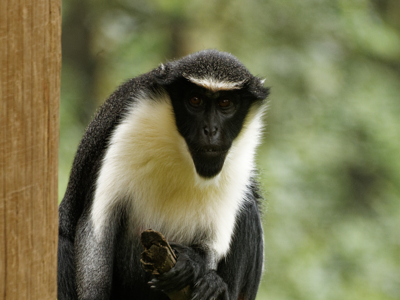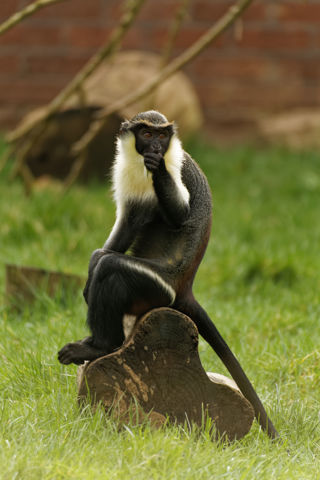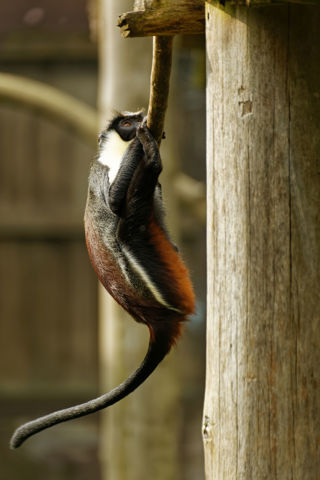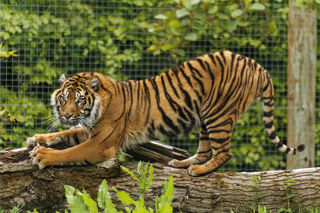
Diana monkey
Diana monkeys, also known as Diana guenons, have distinct markings with a white brow, cheeks, beard and front with diagonal stripes across the rear legs. The rest of the fur is a grey-black colour with a red rump and thighs. They have a long slender tail reaching lengths of up to 75cm. They are named after the Roman goddess Diana as their crescent-shaped brow markings are said to resemble the bow Diana carried.

Diana monkeys live in large groups of up to 30 individuals. This is made up of a single male with around 10 females and their offspring. Living in a group helps the monkeys to spot and deter predators. However, Diana monkeys have become so good at alerting each other to predators that other primate species, such as red colobus monkeys, will associate with the group to benefit from their warning system.
Reproduction occurs annually with a single infant being born each time. The infants are born quite well developed with open eyes and the ability to support their own weight. As a tree-dwelling species, this is a necessity for the infants. They are weaned at around six months of age and will reach sexual maturity at three years old.

Diana monkeys eat a varied diet consisting of fruit, young leaves, flowers and insects.
The main threat facing Diana monkeys is hunting for the bush meat trade. Their conspicuous colours and loud calls make them very susceptible to hunting. In Liberia civil war has increased the availability of guns which is making hunting easier. Their habitat is also becoming increasingly fragmented as human settlements expand and farming increases.
Key Facts:
Conservation Status: Vulnerable
Distribution: Cote d’Ivoire, Liberia, Sierra Leone
Habitat: Tropical Forest
Diet: Flowers, Fruit, Insects, Leaves
Height: 40 55cm
Weight: 4 – 7kg
Gestation: 6 months
No. of young: 1
Life Span: 20 years

SUPPORT OUR ANIMALS
If you're looking for an alternative way to donate to Twycross Zoo, you can help support our animals and our zoo keepers by purchasing something from our Amazon Wishlist!
Updated regularly by our zoo keepers, the items on the list help to provide enrichment for our animals and keep their habitats well maintained.
Every donation helps us as a conservation charity.
